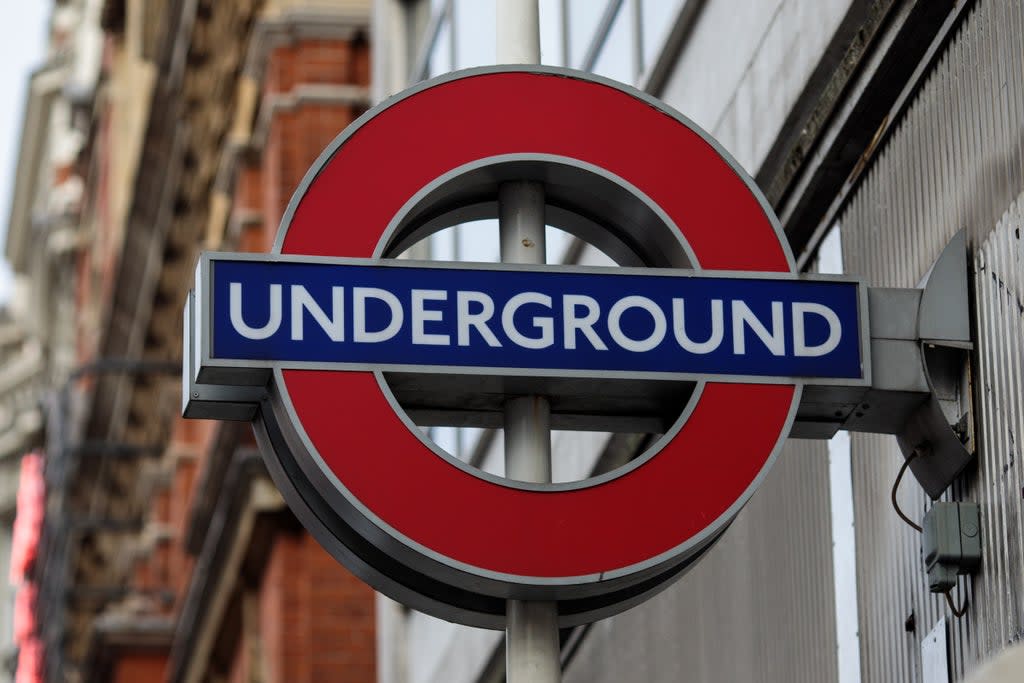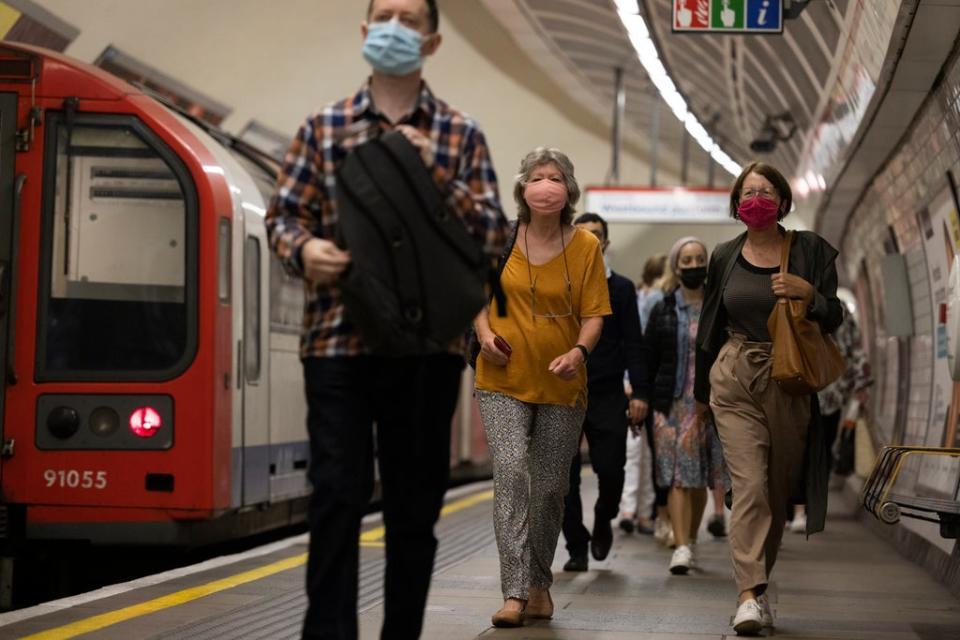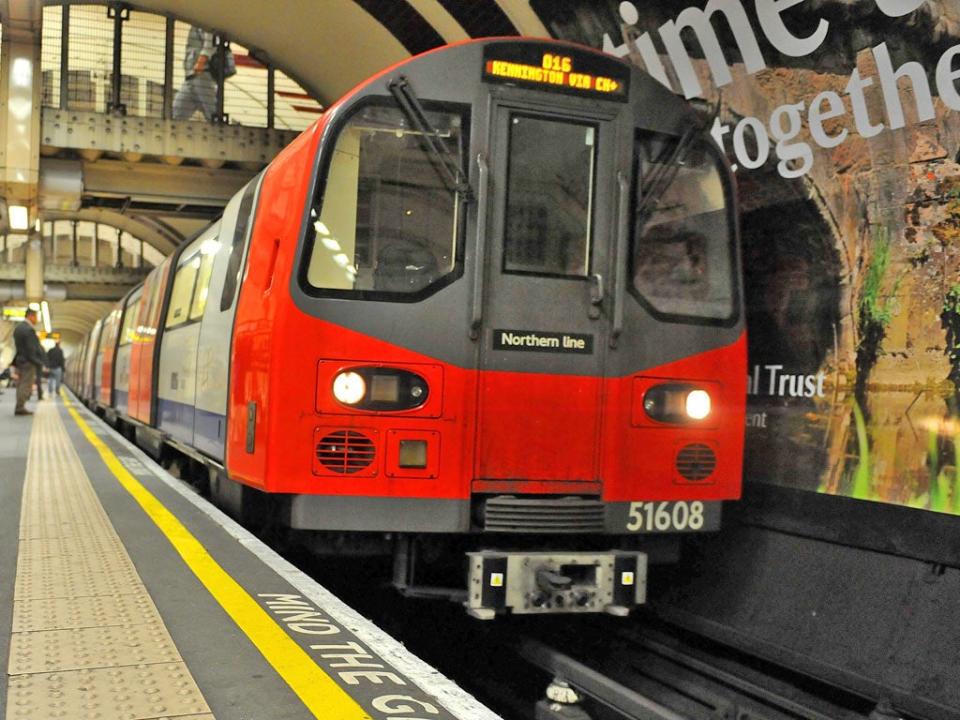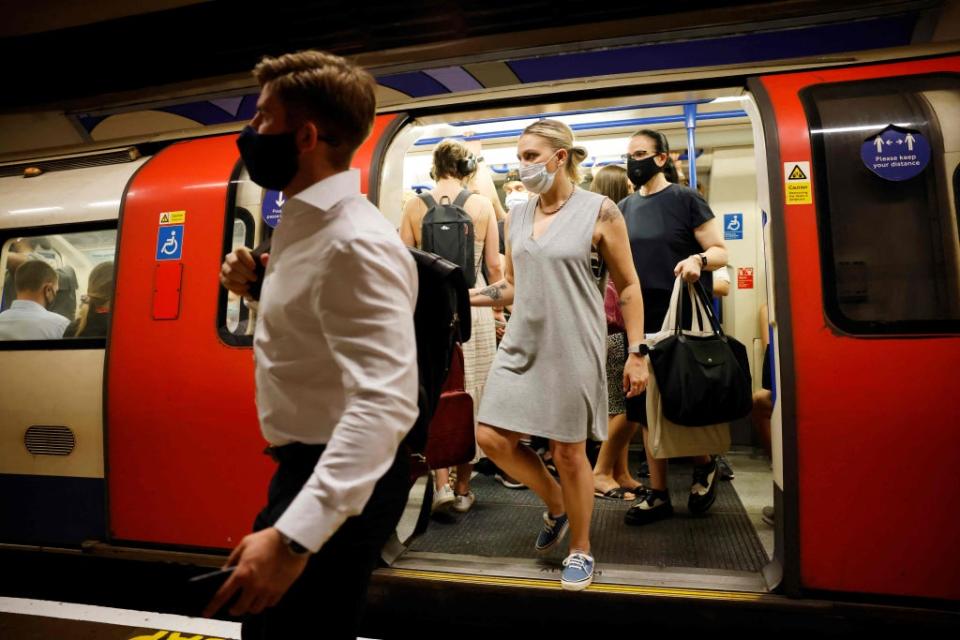Which is the best line on the London Underground?

With the coronavirus pandemic seemingly easing off and offices cautiously reopening, workers across the capital are having to face up to the inevitable and reluctantly cast aside their favoured dressing gowns to rejoin the Great Commute on the London Underground.
The Tube reported its busiest day since March 2020 on Monday 6 September, with 831,000 people tapping into the turnstiles between 7am and 10am, according to Transport For London (TfL), placing travel at 47 per cent of pre-pandemic levels and up 12.5 per cent on the previous Friday.
In a normal year, an astonishing 1.35 billion people venture below the streets to make a journey on the Underground, each trip offering access to 270 stations and taking in some small part of its vast network of track (249 miles in all), much of which sends trains screeching through dank Victorian brick tunnels uneasily modernised to accommodate the demands of the 21st century.
Each train travels an average of 53.6 million miles every year, moving at a typical speed of 20.5 miles per hour, with few managing to escape the clutches of Waterloo, king of the stations and the capital’s busiest, welcoming 100.3 million passengers a year and boasting no fewer than 23 escalators and not one but two moving walkways, a claim only Bank can match.
Everyone is familiar with the classic Tube map, a multicoloured circuit diagram first sketched by electrical draughtsman Harry Beck in 1933, which remains an essential guide through the tiled catacombs and blasted darkness to this day.
But which could be said to be the best of the 11 different lines the Underground has to offer? The Jubilee? The Victoria? The Central?
Any answer to that is bound to be highly subjective and likely to depend on where you happen to need to get to at the time.
If we were to attempt a more scientific assessment, surely the key criteria for judging a Tube line are reliability of service, geographical reach and general ambience, which leads us to consider how frequently a given service suffers delays and suspensions, how much ground it covers and which locations it opens up to the traveller and how clean, pleasant and uncrowded it is.
On the first point, TfL published a major study of its own lines in March 2018, covering data collected between January 2016 and February 2018, which found that there had been 884 hours of delays across the network in total during that timespan caused by 4,000 signal delays, which averages out at five signal failures per day.
The District Line proved to be the worst based on that research, causing 228 hours of delays to commuters’ journeys, followed by the Metropolitan (143 hours), Piccadilly (142), Central (90) and the Circle and Hammersmith & City (75).
The Victoria Line was the most efficient, seeing just 22 hours wasted across the study’s two-year examination period.
“There is a variety of signalling systems in use on the Underground network, some dating back to the 1950s and some having gone into use in 2012,” a TfL spokesperson said at the time. “The range of different eras that the technology comes from presents different challenges in ensuring signal reliability.”
TfL is commendably transparent about the operations of its services and continues to publish data on areas of concern like lost customer hours, the most recent available leading up to the onset of the pandemic last March.
Its figures on that metric find the Central Line most at fault (resulting in 986,101 lost hours) in the final four weeks of normal operations, followed by the Piccadilly Line (519,687), the Jubilee (492,714) and the Victoria (416,006), marking a revival in fortunes for the District, which recorded just 141,307 in those last weeks of The Before Times.

Another investigation by the Mayor of London’s office looked specifically at the problem of overcrowding during the morning rush hour in 2019 and found that the Northern, Central, Jubilee and Victoria lines had all been running at more than 100 per cent capacity at peak times.
While the Northern Line was stuffed with huffing, red-faced commuters jammed up against one another so tightly at 130 per cent capacity that they were barely able to fold their Metros, trains on the much-maligned District Line, by contrast, were just 85 per cent full, offering a comparatively breezy and relaxed experience for the jaded traveller.
In January 2020, a wellbeing company carried out some research of its own to determine the most stressful Underground line, a concept slightly more difficult to quantify that took into account average air temperatures as well as the amount of time lost to disruptions, both factors likely to lead to enhanced tension and aggravation for those on the receiving end.
Overall, that survey ultimately concluded that the Central Line was the most anxiety-inducing ride thanks to its toxic combination of hot carriages and squandered time.
Its average temperature of 26.35C was only the second most sweltering, however, behind the Bakerloo Line, which chalked up an uncomfortable 27.32C average and suffers from poor ventilation, having been opened in 1906 to please cricket fans seeking quick access to Lord’s in the age of steam rail.
The Waterloo & City Line was found to be the least stressful by this metric but, naturally, also recorded the lowest number of completed journeys, a paltry 17 million.
One final recent study of Underground conditions looked at another factor crucial to Londoners’ feelings about their subterranean transport network: hygiene.
Microbiologists from London Metropolitan University compared bacteria swab samples gathered from the capital’s taxis, buses and the Tube in 2017 and concluded that the latter was comfortably the city’s dirtiest mode of transport.

Perhaps surprisingly, the Victoria Line, so praised for its speed and efficiency in racing passengers from Walthamstow to Brixton, was found to be the most squalid, playing host to no fewer than 22 strains of bacteria, including several listed on the World Health Organisation’s roster of most dangerous antibiotic-resistant germs, according to Marie Claire.
These included four superbugs: Staphyloccus Aureus, which causes toxic shock syndrome, E.coli, Klebsiella Pneumoniae and Serratia, tested by the US military as a weapon of germ warfare in the 1950s.
Twenty bacteria types were found on the Circle and Piccadilly lines and 18 on the Jubilee and Northern, but the winner, with a mere 11 strains, was the comparatively sparkling Metropolitan Line, a particularly remarkable achievement given that it is the oldest of the 11 lines, first opened in 1863.
TfL told the magazine at the time that it cleans its trains nightly and shampoos seat covers on the Bakerloo, Central and Victoria lines every six months. No doubt hygiene practices in and around stations have been greatly improved over the last 18 months in response to Covid-19 but the findings were shocking nonetheless.
Looking at all four studies taken together, the District, Metropolitan and Piccadilly lines would appear to be out of the running when it comes to crowning the best line due to their high number of delays, but then all three redeem themselves by running at less than 100 per cent capacity in rush hour, whereas the more trustworthy Northern Line packs in the commuters and can make for the least comfortable jaunt.
The Central Line meanwhile scores badly on delays, crowding and lost customer hours and manages to get itself branded the most stressful into the bargain but then performs reasonably well on cleanliness, the same area in which the slick and self-satisfied Victoria Line let itself down so badly.

The Jubilee might be a stronger contender were it not so packed at peak times, so perhaps the real winner is the dear old Bakerloo, recording just 34 hours of delays in two years, a 95 per cent capacity rate in rush hour and the second-lowest serving of hazardous bacteria.
So long as you can stand the heat, it also offers the tourist delights of Regent’s Park, both Oxford and Piccadilly Circuses and Green Park as well as the national rail conveniences of Paddington and Marylebone and such highly practical destinations as Willesden Junction and Elephant & Castle, gateways to the north and south respectively.
Of course, while all of the above might be a reasonably rational way of approaching the question, ultimately, how we actually feel about a given line is anything but.
Passengers develop their own emotional bonds with the routes they use most frequently and might find themselves feeling oddly affectionate towards, say, the Metropolitan Line, because of the memories and associations it conjures, perhaps a smile at the recollection of returning home from a particularly raucous night out or, alternatively, loathing for the dull, familiar sense of dread a train summons as it dutifully arrives to drag you to work once again on a dismal Monday morning in February.
Quora previously posed this same question about favourite Tube lines and attracted a fascinating range of responses, from Underground workers posting their definitive ranking of the lines with detailed explanations for each choice to individual commuters going to bat for their favourite (“You can access every single other Tube line at some point along the Central Line”), often citing remarkably detailed local knowledge, such as the superior space afforded in the Central’s carriages due to the absence of armrests on its seats.
“Jubilee wins hands down!,” writes one anonymous contributor. “It can get you from Wembley to Madame Tussauds to Buckingham Palace to Big Ben to Waterloo to Tower Bridge to Canary Wharf to the O2 to the Olympic park. Also it is fast, efficient, clean and has those cool sliding doors.”
Equally valid is this response: “I’d go for the Metropolitan Line. It connects town and country, it has several branches, and it’s faster than the other lines because it bypasses a number of stops between Baker Street and Harrow.”

Ultimately, while the data might just about point to the Bakerloo Line being the champ, there really are no hard and fast answers here. It’s very much a matter of personal taste.
You might, for instance, relish the freedom promised by the Central Line’s crosstown journey from Ealing Broadway to Epping Forest via Shepherd’s Bush and Liverpool Street or perhaps prefer the epic ambition of the Northern’s Tolkienian quest from the smouldering volcanic plains of Morden to, er, High Barnet.
One’s judgement might be swayed by hatred for a particular station, such as Tottenham Court Road, for the odiously long death march it demands you embark on to change platforms between the Northern and Central lines, which compares so unfavourably to the quick nip down a short corridor that allows you to sail from the Victoria to the Piccadilly at Finsbury Park.
Or you might harbour irrational affection for a station like Mornington Crescent thanks to its association with the nonsense game of the same name on BBC Radio 4’s I’m Sorry I Haven’t A Clue.
You might also feel differently about the same line at different times, detesting the sluggardly Circle for making you late to your desk in the morning with its only-occasional services but delighting in it in the afternoon, relishing its short bursts of overground sunshine as it wings you home at the close of a trying day.
The Piccadilly Line, loaded with sightseers, might annoy you regularly but you will be glad of it when the moment comes to go abroad and you can follow it all the way to its terminus at Heathrow Airport, a minor miracle of convenience not to be sniffed at.
Read More
‘Do not enter this seating area’: Some tubes and trains keep Covid blocks in place
London underground to get full mobile network by end of 2024
Engagement ring found in Vauxhall tube station sparks search for owner
Father of man who died in Michael Barrymore’s pool dies without seeing justice
New smart motorway safety work will still leave motorists in danger, campaigners say
Minister defends stripping Shamima Begum of citizenship – latest

 Yahoo News
Yahoo News 
